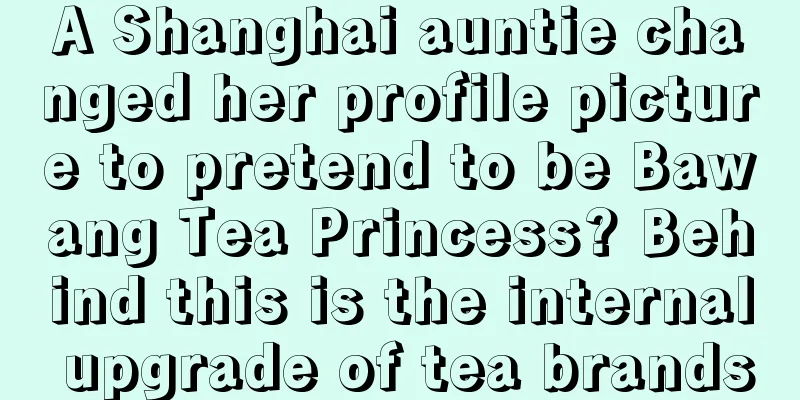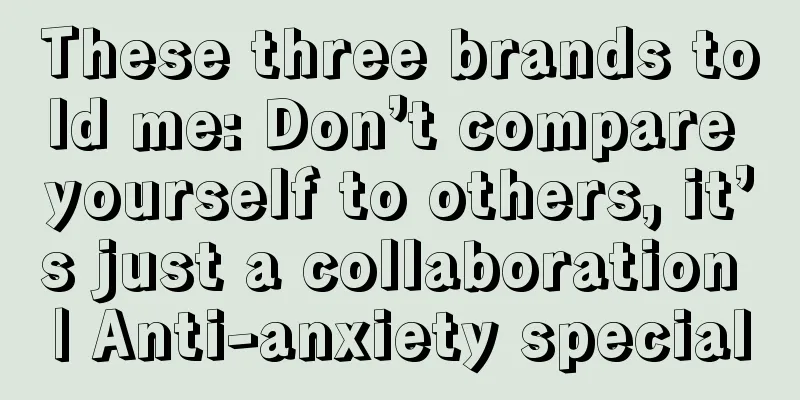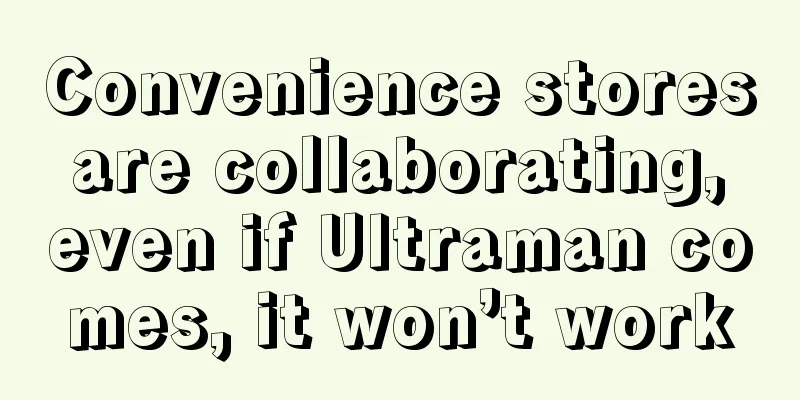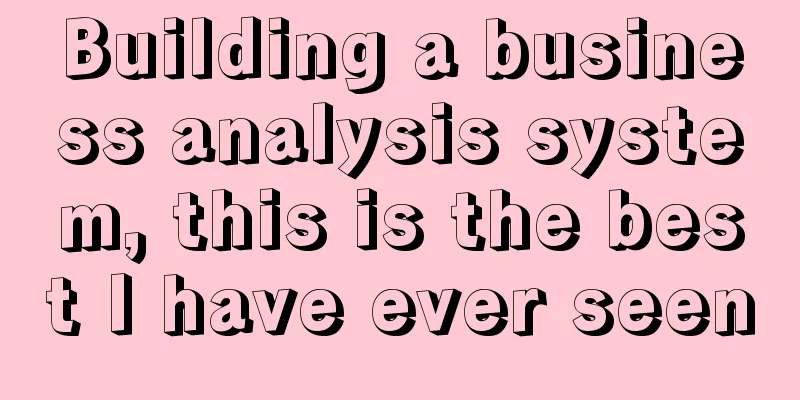The underlying logic of the three major sales

How can we sell faster, more, and more expensive products when products are homogeneous? This is an eternal problem. Today, let's talk about the three major selling logics. 1. If you don’t understand PMF, you don’t know how to sell productsThere is a saying in Silicon Valley: There are two types of startups: those that have found PMF and those that have not. This shows the importance of PMF. PMF (Product Market Fit) is an Internet term. In other words, it means finding the best fit between product and market. The question is, how to find it? We provide a model that can be used by non-Internet people, called the three major pain points of sales. There are three major pain points in sales, namely: Who will buy? Why buy? What is bought? Among them, "who will buy" refers to the target customers, who are the purchasing entities; "why buy" refers to the customer's decision-making motivation when purchasing, which is an emotional reason for purchase; "what to buy" corresponds to the customer's usage needs, which are often implicit needs. How does this work in practice? Let’s take the marketing practice of “electric toothbrush” as an example. First, we will list dozens of possible PMFs, and then condense and refine them, assuming that we will eventually have the above four PMFs. 1.1 PMF1——Niche needs with strong causal relationshipsWho will buy? Dental patients are the customers. Why buy it? The dentist is a KOL and he recommended it. What are you buying? Auxiliary treatment for dental diseases. Medicine and pharmacy all have strong causal relationships, the customer base is not necessarily large, and the efficacy of different brands of the same type of medicine will be different, so you have to recognize the brand. 1.2 PMF2——Public demand for correlationWho will buy it? Beauty enthusiasts. Why buy it? People who love beauty will be attracted to products with high appearance and strong physical sensation. What are you buying? You are buying a refined and quality life. The relationship between those who take care of their skin and those who take care of their oral cavity is not causal, but correlation (big data analysis often shows correlation rather than causality). The customer base of those who love beauty is very large. Those who love beauty recognize brands. 1.3 PMF3——Condition-triggered mass demandWho will buy it? Mom. Why buy it? I get anxious and worried when I see my child’s classmates have caries in their baby teeth. What are you buying? To solve the problem of children not brushing their teeth properly. This is a conditional trigger (just like you might need to bring an umbrella when it rains). The customer base is large, and it is still in the early stages of the category, so the demand for consumption of a specific brand is not that strong (recognizing the category does not necessarily mean recognizing the brand). 1.4 PMF4 - niche search for relevanceWho would buy it? Lazy people. Why buy? Laziness is a social trend. What are you buying? You are buying a subculture and serviceability. This is circle correlation. The customer base may be large, but the base of purchasing specific products may not be large (mainly because it may not be ranked in the priority of importance). It is also the stage of development from category recognition to brand recognition. Do you understand now? If we can’t find PMF, we can’t really sell the product. 2. Now that you understand PMF, how do you sell products?Let's look at the following picture: We break down the three major pain points in sales one by one, and then correspond them to three selling logics: selling through brand power, selling through commodity power, and selling through product power. What is the relationship between these three? Products are based on functions, commodities are based on decisions, and brands are based on emotions. Products are for experience, commodities are for transactions, and brands are for connections. Products solve problems, commodities accelerate exchanges, and brands provide premium exchanges. Without further explanation, let’s move on to the next step. 3. Three sales logics you must understand!3.1 Product Power Sells ProductsWhen we say that a product has strong product power, it is mainly reflected in three aspects: "hard power, soft power, and comprehensive strength".
When it comes to selling products through product power, we will talk about 7 small cases: products based on explicit demand, products based on implicit demand, category concept products, products based on quality guarantee, products based on value symbol, products based on communication symbol, and brand products. 3.1.1 Explicit Demand Products When thermos cups entered the era of product oversupply, customer needs and usage scenarios began to be segmented. In theory, there are many demands for thermos cups, including those that keep the temperature at 100 degrees, 0 degrees, and around 50 degrees. The 55-degree cup is a typical explicit demand product, and its application scenario is when you want to drink the water quickly after pouring hot water, such as when driving. 3.1.2 Hidden Demand Products We often ask: Can we find people who understand us but don’t buy our products? What does this mean? This is the hidden demand. Whoever can solve the “reason why customers don’t buy from you” will tap into a group of potential customers. For example, Ma Xiao Takeaway’s “White Gills Are Really Clean” tells the young middle class that they don’t have “heavy metal pollution in crayfish.” 3.1.3 Brand concept products The product category and concept of "big soda" did not exist originally, so why did we create it? In essence, it is like "deadly big Wusu". If consumers give you a nickname and there is a strong application scenario, then a new category is artificially created, and it comes with its own reason for consumption. Big soda is a soda in a glass bottle that non-drinkers drink at the table. 3.1.4 Quality-guaranteed products The advantages we talk about when selling products can often be roughly divided into two categories: one is hygiene factors, and the other is motivational factors. If there are no hygiene factors, it will definitely not sell well, and even if there are hygiene factors, it may not sell well. Just like if the camera of a mobile phone is bad, it will definitely not sell well, but even if there are hygiene factors, it may not sell well either. It's the same reason. “Three bowls of soup for one pound of bones” is a health factor, which may not necessarily sell quickly. But when you add the physical sensation of “freshly boiled herbs”, it becomes a motivational factor, and suddenly it sells well. 3.1.5 Value-symbol products Due to legal restrictions, many products are not allowed to make claims about their efficacy. So what can we do? Create a value symbol. For example, ginseng does not require education, and Chinese people can understand it at a glance. Visually, the formal name is "a whole root", the common name is "ginseng water", and the main market is "staying up late water". Although nothing is said, no logic, no principle, no efficacy, can't this still be a hot seller? 3.1.6 Communication symbol products The first function of a good advertisement is not to make it widely known, but what is it? It is to give customers a reason to recommend it to their friends. In this case, "zero sugar, zero fat, zero calories" is the reason for the target customer to recommend a product he likes to his friends. This communication symbol has a very strong analogy argumentation effect. 3.1.7 Branded Products Jiro Ono, the king of sushi. Sushi is a strong product, but it is strongly associated with Jiro Ono (founder IP). Its advantage is unique differentiation, but its disadvantage is that if the core person changes, the store will be greatly discounted. 3.2 Product Power SellingSelling goods by commodity power is actually more of an emotional decision. It includes three dimensions: "emotional excitement, emotional identification, and skill drive". The core function is to promote transactions, shorten transaction time, and reduce transaction costs. When it comes to selling products through product power, we will talk about 8 small cases: negative emotion products, positive emotion products, emotional and affective products, direct challenge products, indirect challenge products, self-challenging products, user participation products, and social communication products. 3.2.1 Negative Emotional Products Garbage bags are too homogeneous, and price wars are serious. If you print the word "ex" on them, the products will be homogeneous and the content will be differentiated. Some customers will feel relieved when using this product. 3.2.2 Positive Emotional Products When a major natural disaster occurs, all people will feel depressed. At this time, a positive example appears, which gives everyone a window to vent their emotions. The product is still the same, the brand is still the same, nothing has changed, but the commercial value of this positive energy is hard to imagine. 3.2.3 Emotional Products There is a zero-gravity restaurant in Beijing that actually sells ordinary fast food such as hamburgers and cola, but the dishes are served by rotating them down from a track. This novel and creative way greatly stirs the emotions of children and at the same time meets the emotional needs of parents who want to spend some happy time with their children. 3.2.4 Directly challenging products As a new razor brand, Dollar Shave Club directly challenged Gillette, which had a 72% market share at the time. Not only did it emphasize the high cost-performance ratio by comparing "6 dollars" with "18 dollars", but it also pointed out why Gillette sold it for 18 dollars, because they spent 95% of the money on Federer (advertising endorsement). In the end, it became the number one razor brand in the US online sales by directly challenging it. 3.2.5 Indirectly challenging products Shuyi's Herbal Jelly Tea has half a cup of ingredients. Obviously, it is a hidden challenge to the quality and quantity of traditional milk tea. In addition, it also conveys to consumers that I am a new generation of consumer upgrade products. Killing two birds with one stone. 3.2.6 Self-produced products Whether it is Starbucks or Apple, they like to have three versions of the same product. Why? It will speed up customer decision-making. Unfortunately, most of our brands are not good at using this basic sales technique. 3.2.7 User-involved products This is a Russian dairy product that was originally very ordinary, but later changed its packaging. Some people who are interested in this product want to display the cat in its entirety on the shelf. As a result, a phenomenon has emerged: people who participate in this product believe that this brand has a strong association with themselves, and the product sales have increased significantly. 3.2.8 Social Communication Products In this era of communication, whoever can continuously create social topics will be the big winner. Just like the heavy rain in Beijing that year, this unknown product won the communication effect equivalent to more than 1 minute of CCTV hard advertising for free. 3.3 Brand Power Sells ProductsWhat we call brand power selling is mainly reflected in three aspects: "trust, preference, and premium".
When it comes to selling products through brand power, we will talk about 11 small cases: category type brands, product type brands, customer type brands, KOL type brands, personal emotion type brands, family emotion type brands, commodity mechanism type brands, circle identity type brands, psychological anchor type brands, behavior induction type brands, and social value type brands. 3.3.1 Product Type Brand Many traditional brands want to build their own finished product brands, that is, "brand = category", such as "Zulijian = elderly shoes". However, this also has problems. First, the advertising expenses are not enough and not long enough, so everyone forgets about it; second, competitors also say so, so the public is confused. 3.3.2 Product-based brands Used cars are both an industry and a product. If you can give a reason to buy from the brand level, it will save customers' cognitive costs and marketing costs more than product purchase reasons. 3.3.3 Customer-oriented brand What does Xiaomi sell? The product line is so wide. Xiaomi says, we are the first XX for young people. Now the product logic is clear. It is not interpreted from the product or industry, but defined from the customer. 3.3.4 KOL-type brands It's such a pity for the Li Ziqi brand. It could have become a cultural symbol of China in the world, and made a lot of money by standing up straight. I didn't expect that with such a big eyebrow and big eyes, he would also... 3.3.5 Personal emotional brand People who know Chu Shijian will have personal feelings for this brand. In addition, the brand owner said that they use organic fertilizer, which uses unique tobacco stems. This brand story is both familiar and unexpected, and it seems that the products are much sweeter than their competitors of the same variety. 3.3.6 Family Emotional Brands The first car for Chinese people is often a major symbol of the improvement of the family's life. The whole family will participate in the purchase decision, and how to make the whole family find their own reflection in the advertisement has become the creative focus of more than 100,000 automobile advertisements. 3.3.7 Product mechanism brand Qiandama does not sell overnight meat. In theory, this is a brand value proposition and a health factor. However, it also has a product mechanism, discounts every night to clear out the remaining goods. It combines the power of picking up bargains and the conscientious brand into one. The effect is good. However, it also brings operating pressure to some franchise stores with weak operating capabilities. Not every store can get the ideal gross profit. 3.3.8 Circle Identity Brand Who cares most about school district housing? Generally middle class and above. Then can I create a "Hema house" that is also a standard of middle class quality life? This business concept is still a bit vague, without implicit analogy argument, what should I do? Another down-to-earth explanation: Hema is a community public refrigerator. Okay, it's done. The prophecy has fulfilled itself. 3.3.9 Psychologically Anchored Brands Almost all good brands use the psychological anchoring effect. For example, high-end liquors must be labeled as national liquors and national banquets. The small cans blessed by eight masters and other small cans that are not cheap seem to have opened up a gap. It must be pointed out that gifts are all mental products. People can tell at a glance that they are expensive, scarce, and special products, and they are easy to sell. 3.3.10 Behavior-Inducing Brands Many well-known Internet brands do not have catchy advertising slogans. For example, what is the advertising of WeChat? What about Dianping? But why can people unconsciously awaken muscle memory (not use their brains to think first and then open Dianping) to search when they are eating? This is the behavior induction that the Internet is good at. You can't help but accept it. 3.3.11 Social value brands In 2013, a brand called San Ai Lingerie suddenly emerged in the United States. It said: Victoria's Secret is not produced for the masses, it is "designed for all female bodies." Wow, it has risen from selling underwear to feminism in one fell swoop. It is both a challenge and a social topic, and more importantly, it conveys social values. IV. SummaryIf you don’t understand PMF, you don’t know how to sell products. The core of PMF is the three major pain points of sales: Who will buy? Why buy? What do they buy? How can we sell faster, sell more, and sell at a higher price at a lower cost? Then transform the three major pain points of sales into selling through product power, commodity power and brand power. In short, a brand is about building a connection with customers. Merchandise is about making customers feel good. Products are about solving customers’ problems. Author: Cao Sheng, public account: Grayscale Cognitive Society |
<<: How to double the sales of 200 million yuan
>>: Why is innovation so difficult? This is my understanding after studying several companies.
Recommend
Why is "Subject Three" still so popular?
With the popularity of social media, various onlin...
These 8 shoe products are selling like hot cakes!
If you ask if there are any blue ocean products in...
What are the Amazon listing optimization methods? What are the techniques?
As a long-established cross-border e-commerce plat...
Will Amazon shut down my account if I limit my traffic? How long will the limit last?
Before doing business on Amazon, you must first be...
Xiaohongshu's "virtual bloggers" are in a "surge" phase
Is the trend of digital people the future or a cra...
How can I downgrade my Amazon Mexico account to a personal account? How can I register?
In the digital age, Amazon, as a global e-commerce...
With 5 million fans, "The Innate Internet Saint" has become the new top streamer in the rural track
Douyin's fan growth chart is always full of su...
Short short play "saves" Hengdian ensemble
In 2023, the micro-short drama track was very popu...
How Xiaohongshu leveraged TV drama topics to achieve a 300% increase in traffic
Xiaohongshu's efforts in seeding and marketing...
How to join Shopee? What are the conditions for opening a store?
Shopee is a platform that many merchants have aske...
What can you do with the pinned WeChat Moments?
Recently, WeChat is testing the feature of pinning...
Does modifying the main image on Lazada affect traffic? How to set the main image?
The main image size of Lazada needs to be above 80...
Can I use a third-party account for Amazon bank statements? How?
Some Amazon sellers have recently received emails ...
Reviewing the explosion and decline of the popularity of Miaoya Camera, we found these five factors that made it popular
This article takes the recently popular AI photo a...
Young people who save money have their wallets taken advantage of by discount stores
Compared with large supermarkets with relatively h...









